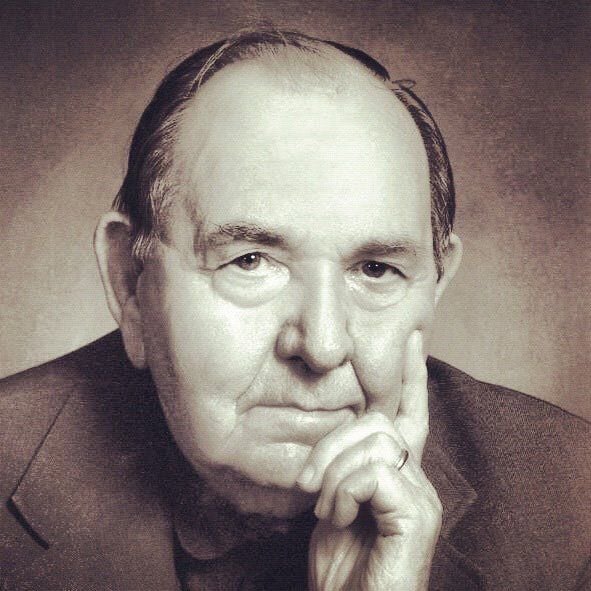James Spainhower’s first job as a pastor was in Fayetteville, Ark.
It was 1953, a year before the decision would end state-sanctioned segregation of public schools.
Spainhower, who was born in Stanberry, Mo., and went to college in Oklahoma, welcomed the church’s first black parishioner. The decision received quite a bit of “pushback,” in the still segregated South, recounts his daughter, Janet Martin.
“Some of the congregants proposed an amendment to the church’s constitution to forbid nonwhites to join the church,” Martin told me. “Other members opposed the measure, and eventually Dad’s decision was upheld. The residual tension, however, led him to leave that church.”
Spainhower came home to Missouri. He worked as a pastor in Marshall. Eventually he ran for state representative. He was Missouri’s state treasurer from 1972 to 1980. He later served as president of College of the Ozarks and Lindenwood College.
People are also reading…
Last week, . He was 90 and had been living in an assisted living facility in Raymore, Mo. I never met him, but Spainhower has regularly been on my mind since early 2014.
That’s when I came across a report that he helped write in 1968 that, had it been implemented, would have changed Missouri forever. Like much of the nation, Missouri was struggling with a racial gap in school performance in its urban areas, Kansas City and �����Ӱ�ԭ��. The problem then was not much different than the one facing city schools today. A 1966 report that had spurred what became known as the found city schools in the state’s two biggest cities isolated “since no surrounding area wishes to incorporate them and to assume a part of the responsibility for educating their children.”
For three years, Spainhower and his blue-ribbon commission studied schools in the state and offered suggestions. Their solution was massive consolidation. In �����Ӱ�ԭ��, they said, the more than 20 school districts should become one, so that taxpayers in the entire region were invested in the success of every student.
In early 2014, the Spainhower Commission report became a rallying call for a push for massive government consolidation in the �����Ӱ�ԭ�� region, drawn on a map to create a more unified community.
I spoke to Spainhower on the phone a couple of times. Still very lucid, he recalled why his commission’s report never led to any change at the legislative level.
“The only place where the report was weak,” he said in 2014, “was in the thought that people could get over their biases.”
In �����Ӱ�ԭ��, it seems, we are reliving 1968 all over again.
Then, suburban school districts fought the consolidation proposed by the Spainhower Commission because they didn’t want to pay for or otherwise absorb black students. Then, the racism was overt, recorded in the comments made responding to the report. These days, it’s more subtle.
For the past four years, around the time I first wrote about the Spainhower Commission, a group of �����Ӱ�ԭ��ans has been talking about consolidation of a different kind. Led by the Rex Sinquefield-funded nonprofit, there have been wide ranging discussions on regional governance, either by the city of �����Ӱ�ԭ�� re-entering the county, or some other sort of merger, or as Mayor Lyda Krewson likes to call it, a marriage.
I have long believed that the best solution is one that nearly starts anew and redraws the city of �����Ӱ�ԭ�� boundary to encompass the entire city and county, as it did before 1876, absorbing most of the 89 municipalities in the county, and creating what would become by population about the 10th largest city in the country.
Underlying all discussions of city and county consolidation, like the school district discussion in 1968, is race. The city is plurality black. The county is majority white. The distrust runs deep.
So it was in Spainhower’s time.
His daughter says he learned at an early age that confronting racism was going to be a necessary part of his job as both a pastor and lawmaker.
“He understood that laws would most likely not be enacted unless the human values nurtured by religion and social justice were a part of the discussion,” Martin said.
Spainhower’s life work will not be forgotten.
is working on a book slated to be published in the fall of 2020 about the history of school segregation in Missouri, focusing primarily on the Kansas City area. Tentatively called “Creating the Suburban School Advantage,” Rury’s book will draw from Spainhower’s important work in the 1960s.
Sadly, Rury says, “The situation hasn’t changed very much. The rhetoric is less charged than 1968, but we’re still fighting to protect borders.”
As Rury’s book comes out in two years, there may be a vote on undoing some of those borders, if not school districts, then some of the other ones that hold us back in �����Ӱ�ԭ��.
Perhaps that vote will be a steppingstone, as Spainhower hoped a school consolidation would be, to a more unified future.















